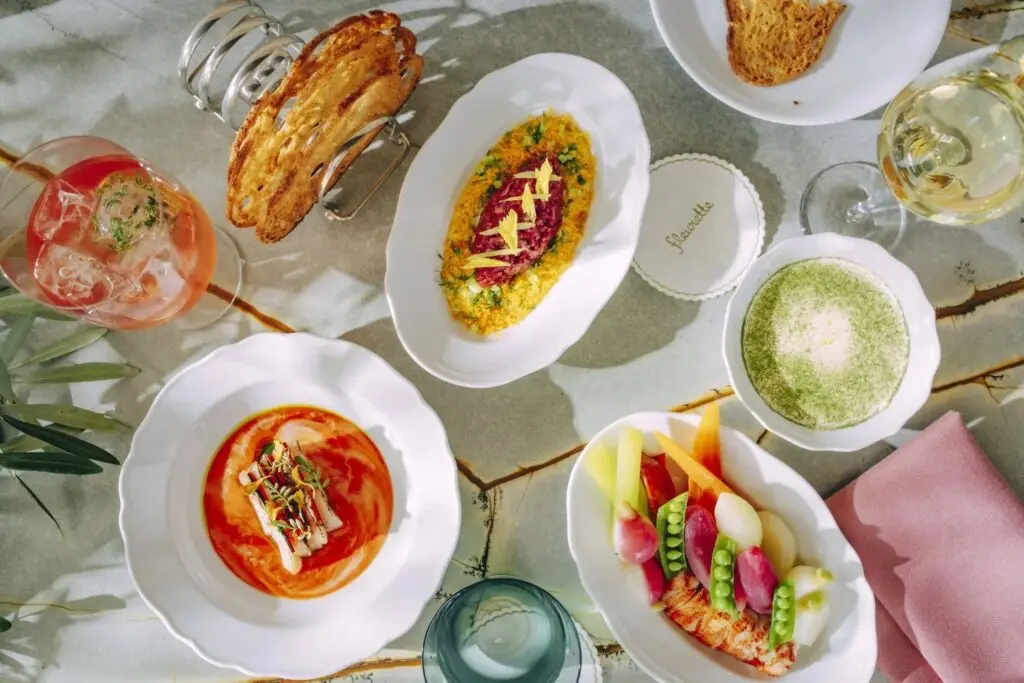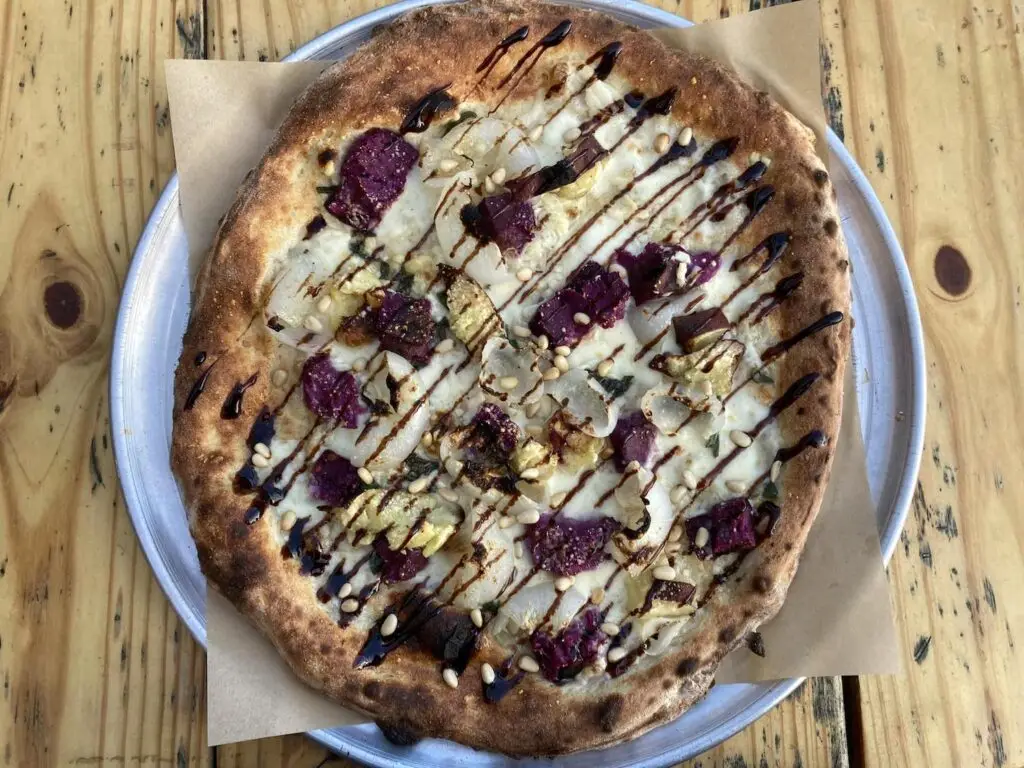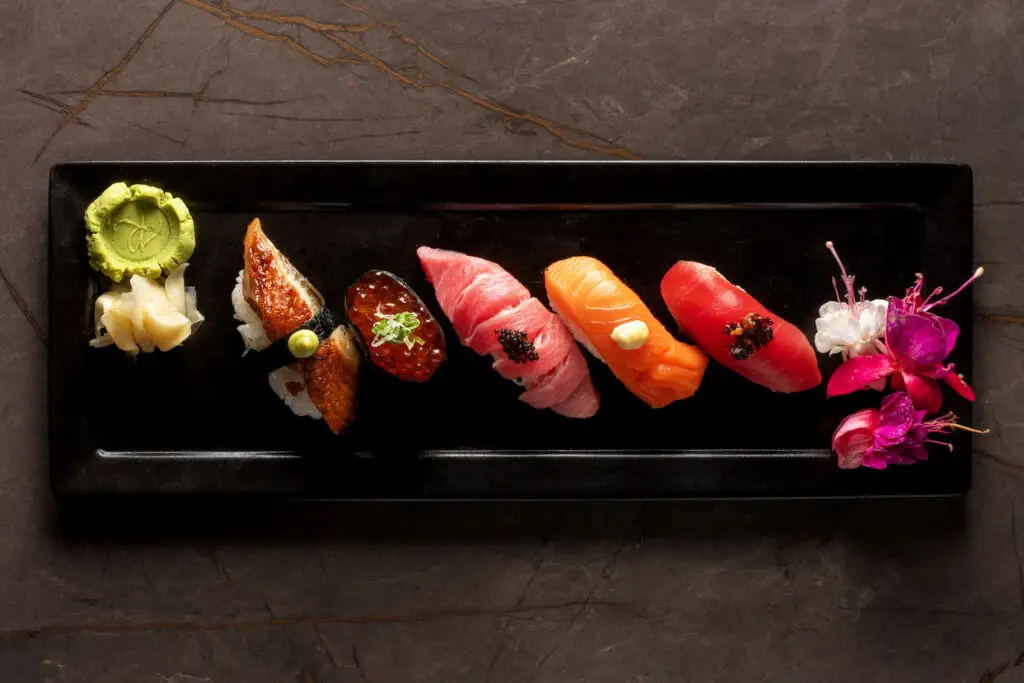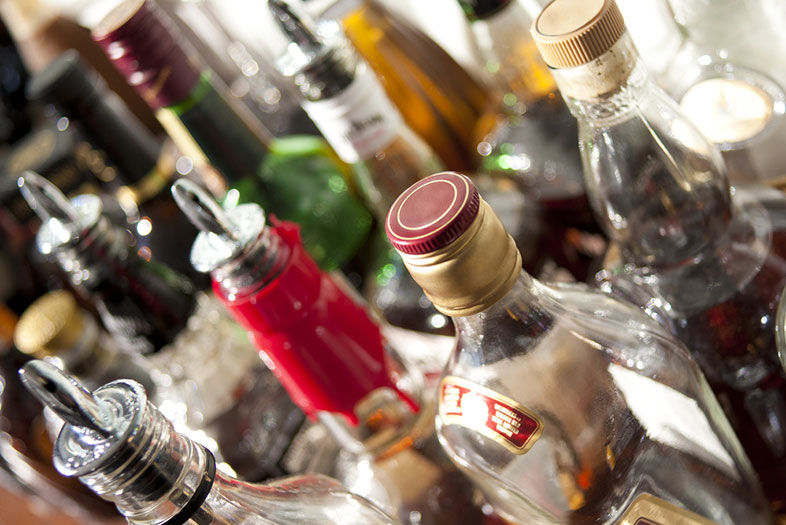My home bar isn’t much different from my closet: there are some quality items, some interesting oddities, and some stuff that’s really gotta go (looking at you, cheap bottle of Blue Curacao). I’d like to pare the whole cupboard down to the necessary basics and then slowly add back in what I’ll refer to as “Home Bar 2.0” items. But, what exactly those items should be, I wasn’t sure, so I reached out to some talented San Diego bartenders to see what they’d recommend.
Andy Luymes, Lead Bartender, JSix
In addition to the basics, a good home bartender should make sure to have a couple of jiggers (a 1 ounce / 2 ounce and a 1 1/2 ounce / 3/4 ounce) for the same reason pros use them— consistency. I would also suggest stocking up on Luxardo Maraschino, Creme de Violette, St. Germain and a decent absinthe. With those, plus the basics, you can make most of the classics, like the Red Hook, Aviation and Sazerac. To me (I’m from the Midwest), St. Germain is like ranch sauce—it goes with everything! In addition to the well-known, I like to splurge on obscure spirits and play around with them. Chareau Aloe liqueur is a favorite of mine.
Morgan Furrer, Bartender, The Nolen
1. Amaro, amaro and amaro: I think an amaro can be a fun and herbaceous addition / substitute to any drink that normally requires sweet vermouth. I love Cynar, Gran Classico, Braulio, Amaro Montenegro.
2. Chartreuse: This is mainly because my favorite cocktails are Chartreuse cocktails. Most love or hate it—obviously I love it. If I’m in the mood for citrusy and refreshing, it’s a Last Word; boozy and bold, a Bijou.
3. Mezcal: It’s delicious, interesting and versatile. Behind gin, it’s my favorite spirit—just not a super cheap, crappy one with a scorpion floating around. I love Vida from Del Maguey.
4. Steigl Radler: Honestly, sometimes you get tired of drinking cocktails and need something light, but flavorful. It’s also is delicious on top of cocktails (maybe even substitute for champagne). My favorite is a mezcal Negroni (substitute mezcal for gin) with a Steigl splash on top.
5. Japanese whiskey: I like scotch; I love Japanese whiskey. Neat or on a rock, it’s my jam. Great in cocktails, but almost a shame to use it.
Mark Broadfoot, Beverage Director, Galaxy Taco
1. Gomme Arabic: This is an emulsifier that you add to simple syrup to make gomme syrup. This is essential to making direct cocktails—an Old Fashioned with gomme syrup has a silky texture and almost weighted viscosity and is fantastic! Use .4 oz as your sugar in an Old Fashioned and you’ll never look back.
2. Acid phosphate: I use this in direct cocktails that don’t contain citrus for acidity or to supplement acidity without adding another flavor profile. I also add acid phosphate to Old Fashioneds and it really brings out a beautiful balance.
Old Fashioned
2 oz. Rittenhouse rye whiskey
.4 oz gomme syrup
2 shakes acid phosphate
2 shakes Angostura bitters.Stir and strain on rocks with orange twist and brandied cherries
3. Orgeat: This is a French almond syrup used in classic tiki cocktails like the Mai Tai. I also like using it in coffee drinks as it’s similar to adding almond milk and sugar to a drink. We have a drink on the menu at Galaxy Taco called “Black’s Beach” that’s made with 2 ounces of mezcal, 2 ounces cold-brewed coffee, 2 shakes acid phosphate, 3 shakes Angostura bitters, and half an ounce of orgeat. (Shake all ingredients and strain on the rocks with an orange twist.)
4. Shrubs: These are sold in craft-spirits stores and online, and it’s something you can make easily at home. Shrubs’ origin dates back to colonial times as a way to enjoy the fruit splendors of the summer in the cold months of the winter. Essentially, a shrub is a fruit syrup cut with vinegar. As different fruits, berries and vegetables come into season, I turn them into shrubs and store them in my refrigerator for up to a year. My recipe is very simple. I take 1 cup of cut fruit, and macerate it in equal parts sugar. Let that sit in your fridge for one or two days. Strain out the fruit and you’re left with a flavored sugar syrup. Cut the syrup with apple cider vinegar at near equal parts—it’ll get even better with time.
5. Rhum agricole: Though rum is usually included in most home bars, rhum agricole, or French rum, is not as common. The main difference between rum and rhum is that rum is made from molasses (the byproduct of making refined sugar) while rhum is made from raw sugar cane juice. Distilling the spirit from cane juice makes it taste more grassy and fresh than its concentrated counterpart. I love this flavor profile, especially in a simple daiquiri. I make my daiquiris with 2 oz. rhum, 3/4+ oz. fresh pressed lime juice, and 3/4 oz. simple syrup, shaken and strained into a martini glass. The simplicity of the cocktail really allows the complexity of the spirit to shine. Rhum agricole comes aged and unaged. My three favorites are La Favorite Ambre, Neisson Blanc, and St. George California Reserve.
Ryan Andrews, Lead Bartender, Prohibition; Co-founder, R&D Bitters
1. Large ice molds and a Lewis bag to make crushed ice: Having good ice is what really sets pro bars ahead of home bar setups. A Lewis bag is great way to make crushed ice at home, which is perfect for drinks like the Bramble (muddled blackberries, gin, lemon, sugar) or a Mojito.
2. Yarai Japanese mixing glass: These seamless mixing glasses not only look classy, but they’re the industry standard for all stirred drinks, especially Manhattan- and martini-style cocktails.
3. Different types of bitters: (I’m going to shamelessly plug myself here!) Having a variety of bitters in your home bar is just like having a shelf of spices for cooking—it’s exact same principal. The reason we started R&D Bitters was to do exactly that and create a variety of cocktail “spices” for bartenders, both professional and at home. Try using R&D Cherry Apple bitters in your next Old Fashioned or Manhattan. Old Fashioneds are all we serve at my house, so I make sure I have plenty of bitters at home.
4. Amari and herbal liqueurs: Having unique liqueurs like Fernet Branca, Chartreuse, Campari, Jagermeister, and Luxardo Maraschino in your home bar allows you to make more complex and unique cocktails. These spirits are also very good on their own over ice or neat as a nightcap.
5. Homemade ingredients: This is easy and the funnest part of bartending. Creating syrups, infusions, tinctures, etc. at home is what really distinguishes an average home bartender from a great one. Check out Jeffrey Morganthaler’s The Bar Book, which is a great start on making syrups and fresh juices.
Robert Yumul, Lead Barman, The Nolen
1. Campari: It’s iconic, bitter, sweet and beautiful. It’s part of the perfect ratio cocktail, the Negroni. Equal parts of gin, vermouth and Campari will always a great cocktail make. Substitute the gin for bourbon, you get a Boulevardier. Sub for a funky rum, you get a Kingston Negroni. If you like Campari, try to substitute for other liqueurs with similar functions, like Aperol (less sweet and less bitter) or Cynar (more vegetal and more earthy). It plays well with citrus, too.
2. A good orange liqueur like Mandarine Napoleon or Pierre Ferrand: They elevate any drink that calls for triple sec or orange Curaçao. It’s crucial for great margaritas and the like. It’ll play well with white and dark spirits. Stirred beverage wise, you can make any number of “improved” cocktails by replacing sweetener with this.
3. Benedictine: This French herbal liqueur is super herbal and delicious. It’s subtle and delicate. It’s important in Creole cocktails like the Vieux Carre and the Cocktail de la Louisiane. Used mostly in direct cocktails, try the San Fran (a variation on a Frisco), with a simple combination of gin, Benedictine and lemon.
4. Absinthe: A dash or two will do. It can transform a drink instantly. A simple absinthe rinse makes other flavors shine, much like bitters can. It’s also essential to Creole cocktails like the Sazerac and the aforementioned de la Louisiane. If you’ve got some Lillet or Cocchi Americano lying around, do yourself a favor and make a Corpse Reviver #2, with some gin, orange liqueur and lemon juice.
5. Amaro Nonino: It’s one of my favorite sippers. It’s slightly bitter and floral and earthy and just plain tasty. In the family of bitter liqueurs, it’s on the lower end of the bitter spectrum. Try it in a Negroni variation with gin, Nonino and dry and sweet vermouth with a lemon peel for my cocktail, the PYT.
6. Mezcal: This versatile spirit can take the place of bourbon or gin or tequila and create new and interesting takes on old recipes. Try a mezcal Old Fashioned with orange bitters instead of Angostura, or a French 75 with this agave spirit in lieu of gin.
Jade Boyd, Bartender, Juniper & Ivy
1. Large cube ice trays: Perfect for Old Fashioneds or drinking bourbon on the rocks. Large cubes melt slower, so there’s less dilution—plus your friends will think it looks cool.
2. Amaro: I love pairing an amaro with dessert. The Italian bitter liqueur is usually drunk as an after-dinner digestif and offers a nice contrast to sweet. Drink it neat or on the rocks, or you can play with substituting it for some or all of the vermouth in a Manhattan. I love Montenegro Amaro neat.
3. Campari: This bittersweet Italian aperitif is essential for making a Negroni (equal parts gin, sweet vermouth and Campari). You can also do Campari-and-soda with an orange slice for something light before dinner to get your stomach juices going.
4. Lillet Blanc: This French aperitif with notes of citrus and honey is delicious on ice with a twist and a splash of soda. It’s also a brilliant cocktail ingredient. Impress your guests with a Vesper martini (from James Bond). The basic recipe is equal parts gin, vodka and Lillet Blanc, stirred and served up with a twist. A lot of people like a more gin-forward Vesper—play with the ratios to make it perfect for your palette.
5. Absinthe: St. George Verte is a nice offering from Alameda, CA. Most people think absinthe is scary or illegal—both not true. It adds a lovely anise flavor to cocktails. A Sazerac is one of my favorite whiskey drinks. Give the glass an absinthe rinse before adding chilled rye whiskey, sugar and Peychaud’s bitters. Put some in a little spray bottle and you can add a little mist of absinthe to any drink. Be playful and adventurous with your booze.

Create Your Own Home Bar 2.0
PARTNER CONTENT
Take your home bar to the next level | Photo by Marcio Jose Bastos Silva / Shutterstock
















